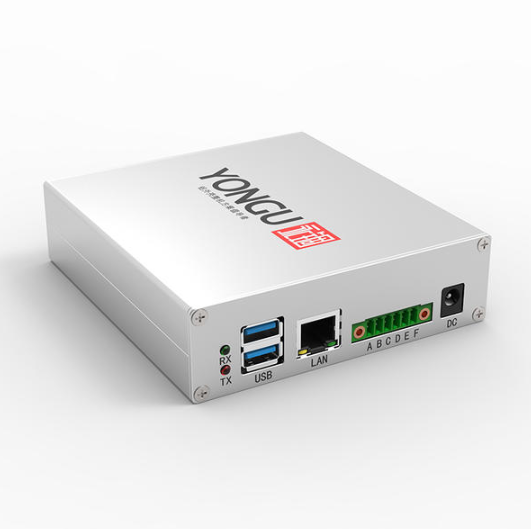In our quest for sustainable energy solutions, the role of battery enclosures has emerged as a crucial aspect of energy storage systems. From facilitating the safe containment of energy to determining cost and material choices, understanding battery enclosures is key to optimizing their functionality and efficiency.
In this post, the author would guide you to explore the uses of the battery enclosures.
In this post, the author would guide you to explore the uses of the battery enclosures.
What is the Purpose of a Battery Enclosure?
Battery enclosures serve a vital purpose in the safe storage and protection of energy cells. Their primary function is to contain batteries securely within a durable structure.
Enclosures shield batteries from external elements, prevent damage caused by environmental factors, and mitigate potential risks such as overheating or fire hazards.
Additionally, these enclosures often incorporate ventilation and cooling systems to regulate the temperature of the batteries, ensuring optimal performance and longevity.
Enclosures shield batteries from external elements, prevent damage caused by environmental factors, and mitigate potential risks such as overheating or fire hazards.
Additionally, these enclosures often incorporate ventilation and cooling systems to regulate the temperature of the batteries, ensuring optimal performance and longevity.
What are the Advantages of a Battery Enclosure?
In essence, battery enclosures serve as comprehensive protective solutions that go beyond physical containment. In this section, the author lists the main advantages of using battery enclosures.
Enhanced Safety Protocols
Battery enclosures often integrate advanced safety features such as fire suppression systems, gas detection, and emergency shutdown mechanisms. These additional layers of protection mitigate the risks associated with battery malfunctions, ensuring a safer environment for both the batteries and personnel.
Customization for Specific Applications
Enclosures can be tailored to meet the specific requirements of different industries or applications. For instance, in the automotive sector, battery enclosures might focus on crash safety and efficient use of space, while in renewable energy systems, they may emphasize weatherproofing and ease of maintenance.
Optimized Performance and Longevity
Temperature regulation within enclosures is critical for battery performance. Enclosures can incorporate insulation or cooling systems to maintain optimal operating temperatures. This extends battery life and helps sustain consistent performance, particularly in extreme climates where temperature fluctuations can impact battery efficiency.
Monitoring and Remote Management
Some enclosures come equipped with monitoring systems that enable remote tracking of battery health, status, and performance metrics. This remote accessibility facilitates timely maintenance and troubleshooting, reducing downtime and enhancing overall system reliability.
Compliance with Standards and Certifications
Enclosures are designed to comply with industry standards and certifications, ensuring adherence to safety, environmental, and regulatory requirements. This adherence is crucial, especially in sectors like healthcare, telecommunications, and energy, where compliance is mandatory.
Mitigation of External Risks
Beyond environmental factors, enclosures shield batteries from physical damage caused by vandalism, accidental impact, or other external risks. This protection preserves the integrity of the battery system, preventing potential hazards.
Integration with Energy Management Systems
Enclosures can be integrated into broader energy management systems, allowing for seamless coordination between various energy sources, storage, and distribution systems. This integration optimizes overall energy efficiency and reliability.
How Much Does Battery Storage for a House Cost?
The cost of battery storage for residential use can vary significantly based on several factors. Factors such as the size and capacity of the battery system, the brand and technology used, installation requirements, and additional features like monitoring systems can influence the overall cost.
Generally, the price range for a home battery storage system can start from a few thousand dollars for smaller setups and extend to tens of thousands for larger, more sophisticated systems.
However, the long-term benefits in terms of reduced energy bills and potential incentives or rebates offered by local governments can make this an economically sound investment in the realm of sustainable living.
Generally, the price range for a home battery storage system can start from a few thousand dollars for smaller setups and extend to tens of thousands for larger, more sophisticated systems.
However, the long-term benefits in terms of reduced energy bills and potential incentives or rebates offered by local governments can make this an economically sound investment in the realm of sustainable living.
What Material is Used for Battery Enclosures?
Battery enclosures are typically crafted from materials that ensure structural integrity, durability, and safety. Commonly used materials include steel, aluminum, and composite materials. These materials are chosen for their ability to withstand extreme conditions, provide structural stability, and offer resistance to corrosion and fire.
Steel enclosures are favored for their robustness and reliability in withstanding physical impacts. Aluminum, on the other hand, is known for its lightweight properties and resistance to corrosion, making it an ideal choice for outdoor installations. Composite materials, often a blend of plastics and other substances, offer a balance between durability and weight, providing flexibility in design and installation.
Steel enclosures are favored for their robustness and reliability in withstanding physical impacts. Aluminum, on the other hand, is known for its lightweight properties and resistance to corrosion, making it an ideal choice for outdoor installations. Composite materials, often a blend of plastics and other substances, offer a balance between durability and weight, providing flexibility in design and installation.
Conclusion
All in all, battery enclosures are vital components ensuring the safe operation of energy storage systems. The cost of implementing battery storage can vary widely, influenced by multiple factors. Moreover, the materials used in enclosures play a crucial role in ensuring durability, safety, and functionality.
As technology advances and the demand for sustainable energy solutions grows, battery enclosures will continue to evolve, offering improved safety measures and cost-effective solutions for business seeking reliable energy storage options.
As technology advances and the demand for sustainable energy solutions grows, battery enclosures will continue to evolve, offering improved safety measures and cost-effective solutions for business seeking reliable energy storage options.





